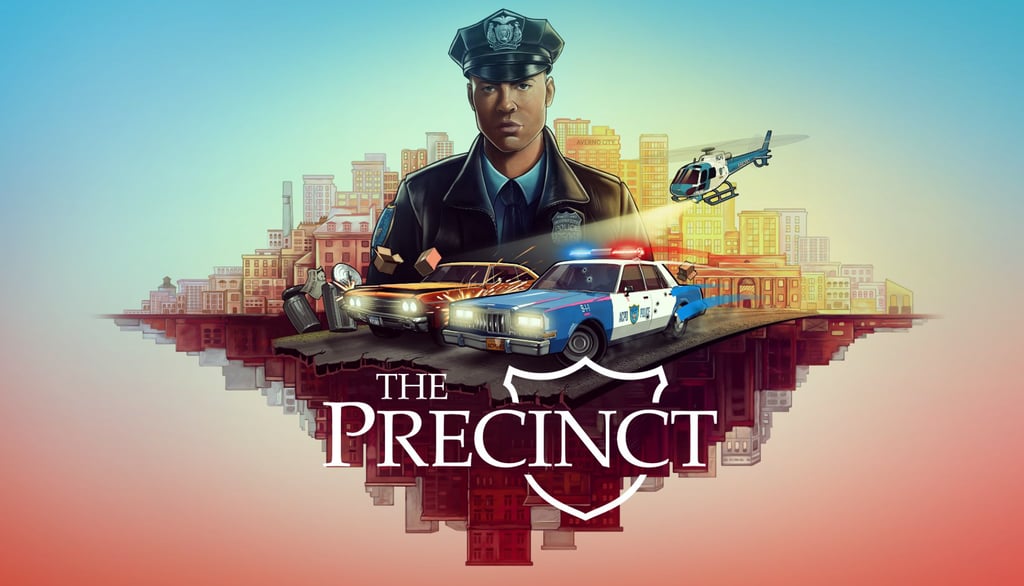The Precinct – 80s Police Simulator
The Precinct is an action-packed police simulation game set in the 1980s, blending law enforcement with the thrill of a crime-filled sandbox. Patrol the streets of Averno City and dive into a neon-noir world full of car chases, shootouts, and 80s nostalgia.
REVIEWS
Carles "Zettai"
5/30/20254 min read


Introduction
The Precinct revives a rarely explored theme: being a cop in an open-world game. Developed by Fallen Tree Games (creators of American Fugitive), it’s set in 1983 in the corrupt city of Averno, a fictional metropolis inspired by New York. Paying homage to classic 80s cop films, the game blends procedural police simulation with the chaotic action of a sandbox. Expectations were high among players hoping for a GTA-style experience but from the other side of the law—and The Precinct largely delivers a fresh twist on a crowded genre. Here’s our breakdown of the PC version.
Story and Setting
The story casts you as rookie officer Nick Cordell Jr., whose life changes when his father, the former police chief, dies in the line of duty. Soon, it becomes clear his death wasn’t random: a criminal conspiracy runs deep through Averno City’s gangs. The main campaign follows Nick as he investigates the mystery, dismantles mob bosses, and uncovers widespread corruption.
The game embraces the full 80s neon-noir aesthetic: crime-filled streets, glowing neon lights, synthwave tracks, and an ever-present sense of danger straight out of a classic cop thriller. Dialogues and situations echo buddy-cop movies and 80s TV shows, though most of the story is told through on-screen text. While the premise is solid and secondary characters add some color, the narrative feels more functional than deep. Characters could have been fleshed out more, but they serve their purpose: to frame the action and pay tribute to genre clichés. Ultimately, the gameplay takes the spotlight.
Gameplay
The Precinct shines by blending patrol life with sandbox action. Using a top-down perspective reminiscent of early Grand Theft Auto games, you take on daily shifts across Averno’s diverse districts—from suburbs to downtown.
Routine duties add flavor: writing parking tickets, warning litterbugs, responding to traffic accidents. These small tasks, guided by a handy police manual, create immersion. Force must be proportional: frisking suspects, reading rights, and making proper arrests are expected. Excessive violence is penalized, lending the game a strategic, semi-simulative edge.
But Averno isn’t calm for long. The city constantly generates callouts, ranging from robberies and gang shootouts to illegal races and traffic stops. Here, the sandbox energy kicks in: do you chase the suspect at full speed or call backup? Rush in with sirens or sneak in quietly? This freedom is one of the game’s strongest assets.
Progression is tied to performance. Successful arrests, fines, and cases earn XP, unlocking upgrades: more health, better accuracy, new weapons, police cars, or support skills. Investigating gangs adds long-term goals: collect evidence during patrols, then launch missions to dismantle criminal organizations. The RPG-lite systems make every shift feel meaningful.
Pursuits and Action
Vehicle chases are the game’s crown jewel. Driving through Averno’s packed streets to hunt down criminals is thrilling and addictive. Physics feel weighty, the partially destructible environment (lampposts, crates, etc.) adds spectacle, and the city layout—alleys, tight corners, improvised ramps—keeps pursuits cinematic.
A clever mechanic powers the chase system: staying close to suspects fills a support bar that lets you call reinforcements—roadblocks, helicopters, or spike strips. Few moments are as satisfying as boxing in a getaway car under pouring rain, sirens blaring, and forcing a surrender.
On foot, however, the game stumbles. Combat and gunplay are serviceable but clunky. Cover mechanics are basic, animations stiff, and enemy AI predictable. Pursuing suspects on foot is fun in concept, but character movements feel robotic. While not game-breaking, it’s a noticeable step down from the adrenaline of driving.
Mission variety is broad early on, but repetition creeps in: many incidents play out similarly after a few hours. The main story missions help offset this, but players shouldn’t expect evolving mechanics beyond the first stretch.
Visuals and Art Direction
Graphically, The Precinct adopts a retro-modern hybrid. Its 3D visuals and top-down camera recall old-school action games while leveraging modern lighting. Averno City feels alive: neon-drenched alleys, graffiti, skyscrapers, and parks all contribute to a distinct sense of place. Dynamic weather and day/night cycles enhance immersion—rain-slicked streets glowing under red-blue sirens feel like a scene from an 80s crime flick.
Vehicles are highlights: modeled after 70s–80s designs, they crumple convincingly in crashes. Character models are small on-screen but distinguishable enough to reinforce the retro setting. Attention to detail—posters, shops, background radios—adds depth without overwhelming.
Sound Design
The synthwave/retro-rock soundtrack perfectly complements the 80s cop fantasy. While not groundbreaking, it injects energy into chases and nostalgia into quieter patrols.
Sound effects carry weight: wailing sirens, screeching tires, smashing glass, and gunfire all enhance the chaos. With headphones, positional audio helps detect nearby crimes before they appear on the map.
There’s no voice acting—dialogue is text-based. While this fits the indie scope, hearing classic one-liners or a gruff police chief voice would have added charm. On the plus side, full Spanish text localization ensures accessibility.
The Good
Convincing 80s neon-noir atmosphere full of retro detail
Thrilling car chases with tactical reinforcements
Police simulation elements (tickets, arrests, procedures) add originality
Progression system and gang investigations keep patrols engaging
Constant flow of city events ensures something to do every shift
The Bad
Story is functional but underdeveloped
Gunplay and foot combat feel stiff compared to driving
Character animations can seem robotic
Sandbox events become repetitive over time
Lack of voice acting makes the city feel less alive
Conclusion
The Precinct delivers a refreshing twist on the open-world formula by putting players in the badge instead of the bandit. It doesn’t reinvent the genre, but it nails what it sets out to do: offer an engaging 80s cop sandbox with cinematic car chases and light simulation touches. Its flaws—clunky gunplay, repetitive events, and shallow story—don’t overshadow its strengths.
For players craving a “GTA as a cop” experience or nostalgic for neon-lit 80s cop thrillers, The Precinct is absolutely worth patrolling. It’s fun, stylish, and unique enough to carve its own niche—and with refinements, it could evolve into a standout series.
Final Score: 7.5/10
Recommended for:
Open-world fans who want to play as law enforcement instead of criminals
80s cop movie and neon-noir enthusiasts
Players who enjoy varied mechanics: driving, shooting, light simulation
Gamers looking for accessible yet fresh action
Available on: PC, PlayStation 5, Xbox Series X/S
© 2025. All rights reserved.
And remember, if you’re into games... you’re into Sector Gaming!
